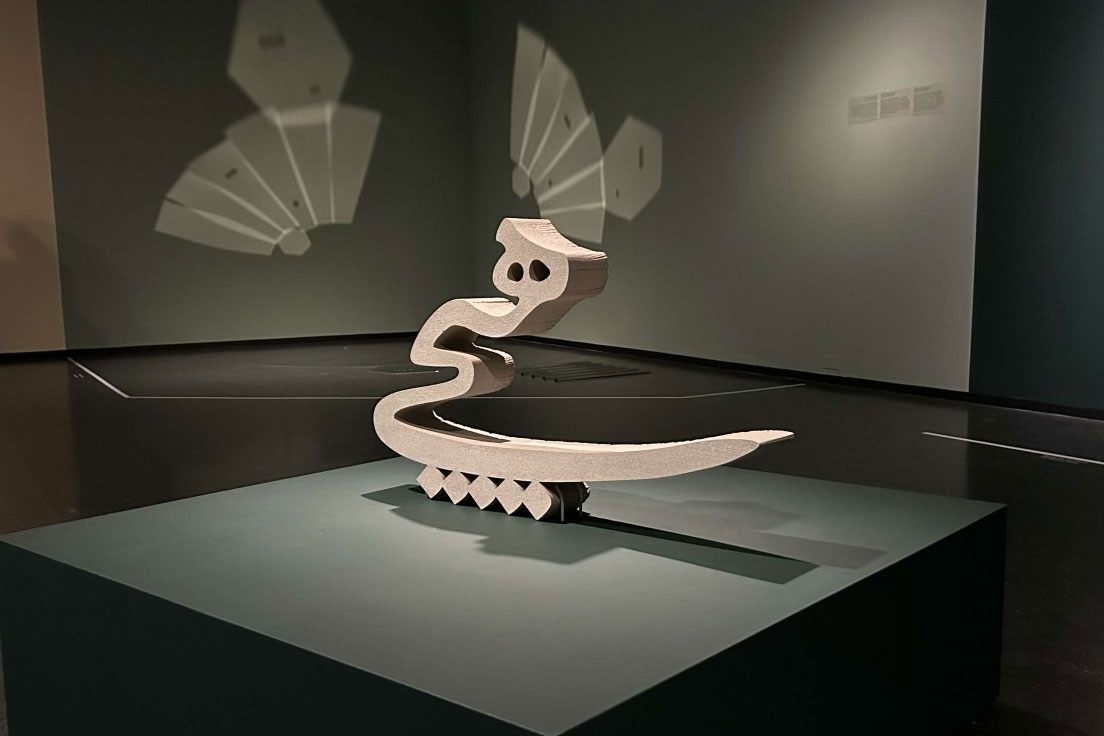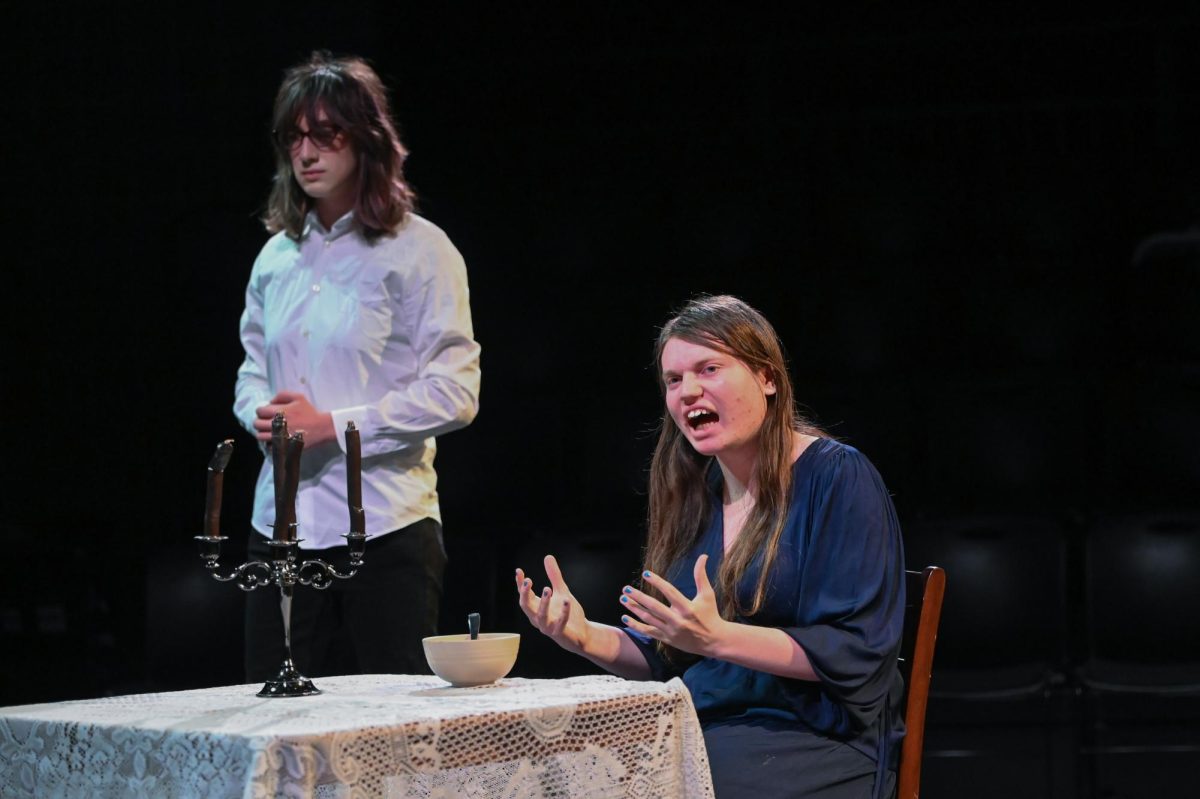From a distance, a short line of connected black diamonds appears to be just a simple marking on a gray wall. But as visitors glance inside the gap in the wall, they peer into a small mirrored space, illuminated by colorful swatches of characters and shapes. This spatial illusion represents the essence of “Nothing Is,” the Chicago Works exhibit at the Museum of Contemporary Art Chicago by artist Maryam Taghavi that uses the calligraphic characters as vessels of expression.
Ms. Taghavi was born in Tehran, Iran. She moved to Canada at 16, where she was forced to rely on a language somewhat foreign to her — English — while exploring new ways to express herself. This dynamic between language, perception and expression has been a central point in her work.
“Suddenly, I could not access my own feelings and emotions in the same language,” Ms. Taghavi, now a Chicago resident, said in an interview with the Midway. “The main element of my practice has been my experience of being a bilingual and figuring out how to position myself across these languages.”
Ms. Taghavi’s exhibit seeks to push the boundaries of what language is and how it is typically understood using various creative techniques.
“My experience of language has been really important in developing my practice. I have, in some ways, really tried to take text out of its conventional linguistic meaning,” Ms. Taghavi said. “What if I add color to it? What if I make it out of concrete or limestone? What if it’s reflected? I’ve been really trying to take language into different mediums and seeing what happens.”
The exhibit challenges an individual’s view of the imperceptible, pushing them to imagine new possibilities within the exhibit space.
“I was really interested for the eye to peek into something that is not really meant to be looked through, but also to create this moment of magic and this moment of that awe that comes with finding something where you don’t expect to find it,” Ms. Taghavi said.
Using physical and visual elements, the exhibit addresses themes of time and space simultaneously.
“The conceptual frame at some point became that I wanted to go from something that is seemingly transcendental and magical to something more earthly and every day,” she said.
Ms. Taghavi also often confronts the concept of perception throughout the exhibit. In various pieces of the work, Ms. Taghavi creates illusions that challenge the viewer’s own senses.
“I have been working with language a lot, but also our optical experience and how our optical experience has this depth to how we receive the world,” she said. “In my work, I have been making instances where you experience optical illusions so that makes you doubt your own eye.”
The exhibit confronts many paradoxes related to time and space, such as wholeness versus emptiness, and what constitutes something versus nothing.
“Life is a paradox. I like to create these paradoxes so we can see what’s in between,” Ms. Taghavi said. “For me that nearness, that closeness, that intimacy and being further away, being distant from it is also one of the elements that I was very much aware of.”
“Nothing Is” calls on viewers to dialogue with the physical world while using their imagination, and is definitely worth a visit. In her work, the audience is asked to face incompleteness, engage with what is unknown and reflect on the true meanings of language.





















































